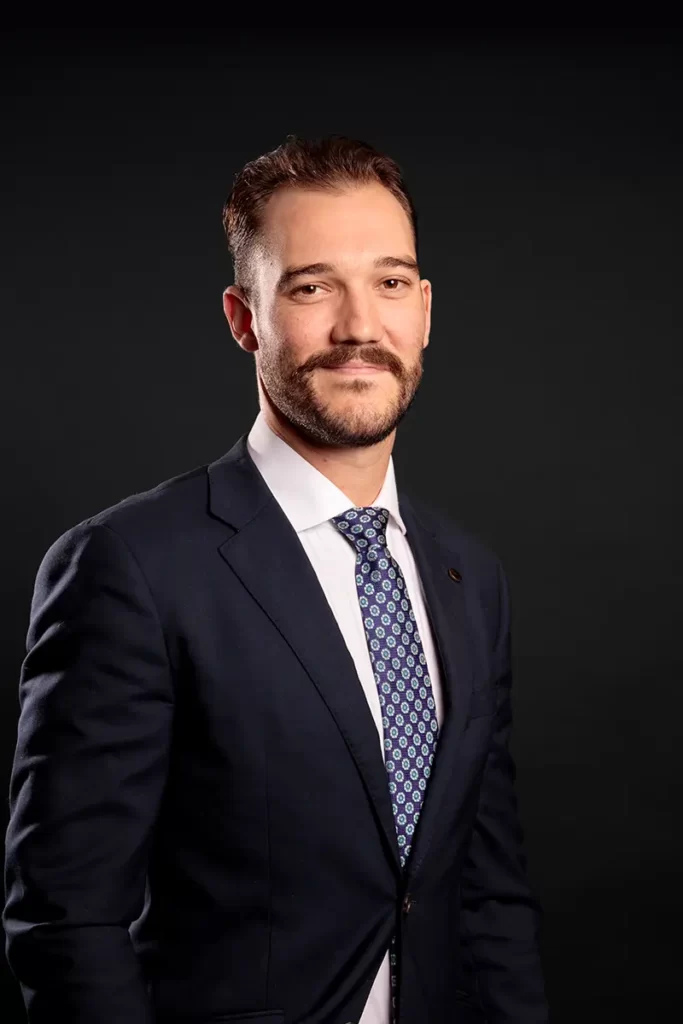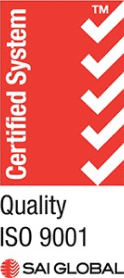Attwood Marshall Lawyers Compensation Law Associate Henry Garrett joins Robyn Hyland on Radio 4CRB to discuss public liability accidents and what people should know about claiming compensation if they are injured in a public place or at a friend’s home. Many people might not understand what types of injuries and accidents fall within the scope of public liability and what rights to compensation you may have. Most owners or ‘occupiers’ of public places and private properties have public liability insurance which may cover people injured in these places. When you take out ‘contents insurance’ for your home, it usually includes public liability cover, which can apply to people injured on your property.
Introduction
In the past, public liability claims have been surrounded by a stigma. This stems from an old perception that individuals may attempt to exploit the system by exaggerating their injuries after a minor mishap or incident, such as a small ‘slip or trip’ at the local store or supermarket, all in the hopes of making a fast and easy ‘profit’ for a relatively minor injury.
However, in today’s system, it is much harder for false or exaggerated claims to proceed as there are measures in place to prevent people trying to overstate their injuries. The measures ensure the integrity of the claims process and protects against fraudulent claims.
Public liability laws are designed to provide legal recourse and protection to individuals who suffer injuries or damages due to the negligence of others, and particularly, the owners or occupiers of public places like footpaths, parks, jetties, theme parks, swimming holes, beaches, shopping centres, car parks, hotels, nature walks, etc. It also applies to private properties and people’s homes (e.g. dangerous balconies or stairs). It encompasses a wide range of accidents that can occur in different settings, ensuring that individuals are not left without legal remedies, regardless of the specific circumstances or location where the incident took place.
Catastrophic public liability accidents
There have been some extremely horrifying public liability accidents over the past few years with devastating consequences.
On the 16th December 2021, news broke of a jumping castle accident at a school in Tasmania that resulted in 6 children being killed and more injured, after a jumping castle was suddenly picked up by a gust of wind with wind speeds reported as high as 17km/h at the time.
The school was holding an event to celebrate the last day of the school year when the jumping castle, as well as inflatable Zorb balls, were picked up by wind.
Investigations into the weather conditions, business responsible for the equipment, the equipment itself and the set up were conducted.
As a result of this horrific incident, the Tasmanian Education Department banned the use of jumping castles at all state schools.
Jumping castle accidents are certainly nothing new. Several years prior to the above incident, a Queensland mum condemned a local indoor inflatable centre after her son was fatally injured.
The accident was certainly not an isolated one, with more reports also coming out about children breaking limbs and questions being raised about the safety of these types of entertainment facilities.
Attwood Marshall Lawyers have a long list of horror stories to accompany these tragedies where injured claimants in a public liability accident have fortunately had successful claims, but this area of law can cover some of the worst-case scenarios. The range of accidents that fall under public liability laws is extremely diverse and can range from medical negligence and malpractice, to boating accidents, sporting accidents, food poisoning from a restaurant to a dog attack at the local dog park. It can also involve poorly designed or dangerous building access or exits which are not properly lighted or have no warning signs. We had a case where someone opened a door in a car park thinking it was an exit door – it was an empty lift void and the person fell 3 stories and was severely injured.
Steps to take if you are injured in a public liability accident
- First and foremost, if you have been injured in a public liability accident, get the medical treatment you need as soon as possible. The hard work is done for some people who travel by ambulance to hospital, but for those who have suffered injuries that don’t require immediate hospitalisation, it is up to you to report your injuries to your GP or local hospital and obtain treatment.
- If anyone witnessed the accident happen, be sure to gather their contact details and immediately notify the owner or occupier in person, by phone, and confirm by email.
- If possible, gather evidence such as photos or video footage of the hazard that caused your injuries and the injuries sustained as soon as possible and keep the shoes and clothes you were wearing (don’t wash them or throw them out!).
- Obtain advice from an experienced public liability compensation lawyer as early as possible to understand the steps to make a public liability claim and what time limitations you will need to adhere to.
- Complete a PIPA Notice of Claim Form (if you are in Queensland) or serve a letter of demand on the person or entity who is responsible for the injury (in New South Wales).
It is important to note that in a public liability claim, the evidence of the accident is extremely important. This evidence will be used to help demonstrate that the person or company at fault owed you a duty of care and that they breached that duty of care, resulting in the injuries suffered.
Public liability claims – the process
Queensland
After having an initial consultation with a compensation lawyer to determine eligibility to claim compensation for injuries sustained in a public liability accident, the following steps will generally follow:
- Once the notice of claim form has been served, the respondent must answer the claim within 14 days.
- In the subsequent two months, the applicant will prepare their claim detailing the injury, the treatment they have received or require, and the impact the injury has had on their life. Both parties will need to provide particulars within three to six months.
- The respondent will then prepare their response within 6 months.
- The parties will organise independent medical examinations including diagnostic tests and consultations with specialists, within 6-12 months.
- The parties will attend a compulsory conference within 12-18 months, and in most cases, this is when the matter will settle.
- If the matter does not settle at the compulsory conference, the parties may commence court proceedings within 60 days.
In most cases, a public liability claim will take 12-18 months to settle. The length of the claim will depend on the individual circumstances of the matter, how long it takes for the person’s injuries to stabilise and the attitudes of all parties towards settling the claim.
New South Wales
New South Wales refer to public liability claims as a Civil Liability Act claim (CLA). South of the border have not adopted the ‘pre-court procedures’ like Queensland. In New South Wales, it is simple, there are no claims forms or procedures to adhere to. They also have an impairment threshold to qualify for general damages for pain and suffering, so usually you will need to be fairly seriously injured to bring a viable claim in NSW.
To initiate the claim, an injured person must notify the defendant of their claim in writing and if the claim cannot be resolved informally, then Court proceedings can be issued in the relevant court via a Statement of Claim and Statement of Particulars.
These court pleadings must be filed within 3 years and served on the defendant within a reasonable time of filing. The defendant must file and serve their defence 28 days later.
From that point on, it is up to the parties to try and resolve the claim. These types of claims are extremely contentious and often are not resolved within the usual 12–18-month estimate. This, of course, depends on the severity of the person’s injuries and the attitude of the defendant to resolve the claim.
What can be claimed?
When making a public liability claim the main things you can claim compensation for are as follows:
- General Damages (i.e. pain and suffering);
- Past and Future Treatment Costs
- Past and Future Income Loss (including loss of super); and
- Past and Future Care and Assistance.
Quantifying compensation brings a long list of challenges and legal trap doors, so it is imperative that an experienced personal injury lawyer is engaged before making an offer to the defendant. For example, for an injured person to claim care and assistance, they must prove that they have received a minimum of 6 hours per week for the first 6 months since the accident.
Be aware of time limitations
Acting promptly is crucial to understanding your position and taking appropriate action if you intend to claim compensation for a public liability accident.
Queensland
For a standard claim, a notice form must be served on the defendant within 9 months of the accident or from the date the person experienced their first symptoms.
The 9-month time limit is rarely fatal to a compensation claim if you fail to meet this, however, you must provide a reasonable excuse for the delay if you missed the deadline.
Following this, the claim must be commenced in court (or otherwise have its time limitation protected) within 3 years of the date of accident, or the claim will be statute-barred. This means you will be prevented from making a claim after that date.
New South Wales
An injured claimant must serve a letter of demand on the negligent party and commence the claim in court within 3 years of the accident or the claim will be statute-barred.
Attwood Marshall Lawyers – helping people receive the treatment they need for over 75 years
The most important thing to do if you have suffered an injury in a public liability setting is don’t dismiss it. Seek medical attention and get the treatment you need as soon as possible.
Be diligent in documenting the event and collecting evidence about your injuries and how they were sustained. Although you may not think you need this at the time of the accident, if the injuries become more serious than you first expected, this will be critical to your claim should you seek compensation for your injuries.
Attwood Marshall Lawyers have a dedicated team of experienced compensation lawyers who practice exclusively in this field. Be supported by professionals who know how to handle the insurance companies, so that you can focus on your recovery and wellbeing.
We know just how stressful and difficult it can be when you have suffered a sudden injury and your world has been turned upside down. We will help carry some of the burden and deal with all communications between the insurance company, advocating for you during this difficult time.
To discuss your specific matter, please contact our Compensation Law Department on 1800 621 071 for a free, no-obligation claim review.
Our compensation lawyers are available for appointments at any of our conveniently located offices at Coolangatta, Robina Town Centre, Southport, Kingscliff, Brisbane, Sydney, and Melbourne.

